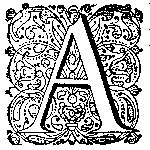‘Vare Wel Dur Luf’
Tune Indicators in Alba Amicorum of the Sixteenth Century
DOI:
https://doi.org/10.51750/emlc12171Keywords:
song, tune indicator, contrafactum, album amicorumAbstract
This article traces the phenomenon of tune indications from their beginning to their use in three sixteenth-century manuscripts which hover on the border between alba amicorum and songbooks. The tune indication, the reference that shows which melody the song can be sung to, forms part of ‘song literacy’, the art of conserving a song beyond the moment of performance. Songs written down in alba amicorum may fill a gap in existing theories about the rapid development of song literacy in the sixteenth century. In addition, concentrating on the tune indicators may help to sharpen the definition of an album-with-songs compared to a songbook. In the Low Countries, tune indicators began to be attached to religious songs in the last decades of the fifteenth century. They were used to communicate new religious texts to an audience and to facilitate overruling sinful worldly texts. In printed collections of secular songs tune indicators seems to have been introduced after 1550 – but it took well into the 1600s before they became conventional in printed song collections. In handwritten collections the tune indicator was not the norm, with one notable exception: in circles of chambers of rhetoric. As alba-with-songs from the sixteenth century show, in the century’s last decades it became fashionable, at least within a small circle of alba owners in the western Low Countries, to provide a tune indicator. In these circles a good tune functioned as an important creative impulse to write new songs, especially semi-religious ones. These alba-with-songs might be considered harbingers of the song-minded Dutch ‘Golden Age’.
Downloads

Published
Issue
Section
License
Copyright (c) 2022 Carla Strijbosch

This work is licensed under a Creative Commons Attribution-NonCommercial 4.0 International License.





